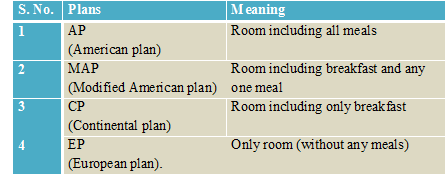
- Fundamental research is also called Basic research and pure research.
- The purpose of basic or fundamental research is generation of new knowledge for the sake of knowledge.
- It is not directed towards the solution of immediate practical problems.
- It is the major focus in science subject.
- Basic research is usually conducted by using the most rigorous research methods such as experiment under tightly controlled laboratory conditions.
- Example of fundamental research includes Law of Gravity, which doesn't have a specific purpose during its invention but it has been how applied in so many areas.
- Fundamental research is also called Basic research and pure research.
- The purpose of basic or fundamental research is generation of new knowledge for the sake of knowledge.
- It is not directed towards the solution of immediate practical problems.
- It is the major focus in science subject.
- Basic research is usually conducted by using the most rigorous research methods such as experiment under tightly controlled laboratory conditions.
- Example of fundamental research includes Law of Gravity, which doesn't have a specific purpose during its invention but it has been how applied in so many areas.
2. Applied Research:
- It is focused on answering real-world, practical questions in order to provide relatively(as compared to Fundamental research) immediate solutions.
- It is performed in relation to actual problems and under the conditions in which they are found in practice.
- Topics for applied research are often driven by current problems and concerns.
- Applied research is often conducted in more natural settings than fundamental research.
- Applied research is generally an extension if fundamental research in terms of utility.
- An example of applied research would be memory chip of phone which is an extension of semi-conductor material in terms of utility.
- It is focused on answering real-world, practical questions in order to provide relatively(as compared to Fundamental research) immediate solutions.
- It is performed in relation to actual problems and under the conditions in which they are found in practice.
- Topics for applied research are often driven by current problems and concerns.
- Applied research is often conducted in more natural settings than fundamental research.
- Applied research is generally an extension if fundamental research in terms of utility.
- An example of applied research would be memory chip of phone which is an extension of semi-conductor material in terms of utility.
3. Action Research:
- Action research is focused on solving specific problems faced in day to day life.
- it is conducted in local natural settings.
- Corey (1953) defines it as “Action research is the research undertaken by practitioner, so that they may improve their practices. It helps a practitioner to perceive, understand and assess the situation and it further facilitates a systematic analysis and working out plausible reasons, for the unsatisfactory condition. With action research, a practitioner can try out alternative strategies till the problem is solved satisfactorily”.
- High drop outs at school/colleges, high attrition rate of employees at an organisation can be quoted as examples for action research.
4. Evaluation Research:
- As visible from the name itself, Evaluation research involves determining the worth, status or qualities of an object such as an a project, activity or a policy.
- It is of two types formative evaluation and summative evaluation.
- When the primary purpose of an evaluation is to lead to judgments about how a program can be improved, it is called a formative evaluation.
- when the primary objective of an evaluation is to lead to judgments about whether a program is effective and whether it should be continued, it is called a summative evaluation.
- An example of evaluation research would be evaluation of MGNREGA or Mid-day meal program at schools which had specific purpose, evaluation can be done to see its impact and progress.
1. Exploratory research:
- Marlow (2005) defines exploratory research as “A form of research that
generates initial insights into the nature of an issue and develops questions to be
investigated by more extensive studies".
- Exploration is often the first stage in a sequence of phases for the same study in order for the researcher to know enough to design and execute a more systematic and extensive study, and to uncover generalizations and develop hypotheses that can be investigated and tested later.
- Exploratory research aims to enquires into the circumstances in a
community, how people get along in their setting, what meanings they give to their
actions and what concerns them.
- In exploratory research large amounts of unstructured
information are normally collected in order to explore a new topic, or to be responsive to
new concerns by breaking new ground through delving into new problem areas, to work on topics about which very little information is available and to gain a broad
understanding of a situation, community or person
- Exploration is also appropriate for more persistent phenomena, for testing the feasibility
of undertaking a more extensive study, for developing the methods to be employed in
the study and for generating more focused research questions and hypotheses for
additional investigations.
- Marlow (2005) defines exploratory research as “A form of research that generates initial insights into the nature of an issue and develops questions to be investigated by more extensive studies".
- Exploration is often the first stage in a sequence of phases for the same study in order for the researcher to know enough to design and execute a more systematic and extensive study, and to uncover generalizations and develop hypotheses that can be investigated and tested later.
- Exploratory research aims to enquires into the circumstances in a community, how people get along in their setting, what meanings they give to their actions and what concerns them.
- In exploratory research large amounts of unstructured information are normally collected in order to explore a new topic, or to be responsive to new concerns by breaking new ground through delving into new problem areas, to work on topics about which very little information is available and to gain a broad understanding of a situation, community or person
- Exploration is also appropriate for more persistent phenomena, for testing the feasibility of undertaking a more extensive study, for developing the methods to be employed in the study and for generating more focused research questions and hypotheses for additional investigations.
2. Descriptive research:
- Descriptive research is considered by Grinnell (2001) to lie at the midpoint of the knowledge continuum.
- Marlow defines descriptive research as “A process of recording and reporting phenomena; not primarily concerned with causes”.
- whereas Dane (2011) states that it is "descriptive studies as larger-scale numerical efforts that attempt to characterize, for instance, age, income and family size, to understand, to illuminate and to gain a detailed picture of patterns of a particular group, such as the homeless, to differentiate them from other phenomena, or to accurately describe program activities".
- Descriptive research presents a picture of the specific details of a situation, social setting or relationship.
3. Explanatory research:
- It is also known as causal research.
- Glicken (2003) defines explanatory research as, “The type of research that attempts
to provide meaningful and accurate conclusions from the considerable amount of
information already available ”
- Explanatory research tends to be deductive and thus quantitative in nature.
- explanatory research seeks to identify causes, to
ascertain causality between factors and to determine effects on behavior of a social
phenomenon, and to predict how one phenomenon will change or vary in relation to
another variable, for example, to understand and explain the causes of a social condition
such as homelessness.
- This should lead to explaining why events occur and to building, elaborating, extending, testing or revising a theory.
- explanatory research aims at developing and
testing theory in a particular field of study.
- it is considered explanatory research to be the ultimate goal of science and at the highest level of the
knowledge continuum.
- Explanatory studies are normally experimental in nature, where hypotheses can be tested
and comparison groups used.
- Unlike descriptive
research, which tends to focus on how things are, the goal of explanatory research is to
explain why things are the way they are.
- Explanatory research normally builds on exploratory and descriptive purposes, and goes
beyond focusing on a description of a topic or providing a picture of it.
- A causal connection
between the independent and dependent variable can be established in explanatory
research.
- It is also known as causal research.
- Glicken (2003) defines explanatory research as, “The type of research that attempts to provide meaningful and accurate conclusions from the considerable amount of information already available ”
- Explanatory research tends to be deductive and thus quantitative in nature.
- explanatory research seeks to identify causes, to ascertain causality between factors and to determine effects on behavior of a social phenomenon, and to predict how one phenomenon will change or vary in relation to another variable, for example, to understand and explain the causes of a social condition such as homelessness.
- This should lead to explaining why events occur and to building, elaborating, extending, testing or revising a theory.
- explanatory research aims at developing and testing theory in a particular field of study.
- it is considered explanatory research to be the ultimate goal of science and at the highest level of the knowledge continuum.
- Explanatory studies are normally experimental in nature, where hypotheses can be tested and comparison groups used.
- Unlike descriptive research, which tends to focus on how things are, the goal of explanatory research is to explain why things are the way they are.
- Explanatory research normally builds on exploratory and descriptive purposes, and goes beyond focusing on a description of a topic or providing a picture of it.
- A causal connection between the independent and dependent variable can be established in explanatory research.
4. Correlational research:
- Correlational research aims to identify variables that have some sort of relationship do the extent that a change in one creates some change in the other.
- Its properties are shared with descriptive research and causal research to some extent.
- The correlation coefficient shows the correlation between two variables (A correlation coefficient is a statistical measure that calculates the strength of the relationship between two variables), a value measured between -1 and +1. When the correlation coefficient is close to +1, there is a positive correlation between the two variables. If the value is close to -1, there is a negative correlation between the two variables. When the value is close to zero, then there is no relationship between the two variables.
|
Factor |
Exploratory research |
Descriptive research |
Causal research |
|
Amount of uncertainty characterizing decision situation |
Highly ambiguous |
Partially defined |
Clearly defined |
|
Key research statement |
Research question |
Research question |
Research hypotheses |
|
When conducted? |
Early stage of decision making |
Later stages of decision making |
Later stages of decision making |
|
Usual research approach |
Unstructured |
Structured |
Highly structured |
|
Examples |
‘Reduction in Sales of a product for no apparent
reason’ ‘What kinds of new products are rural tourists interested in?’ |
‘What kind of people patronize our stores
compared to our primary competitor?’ ‘What features of a tour package are the most important to our
customers?’ |
‘Will consumers buy more products in a
blue package?’ ‘Which of two product promotion will be more
effective?’ |







0 Comments